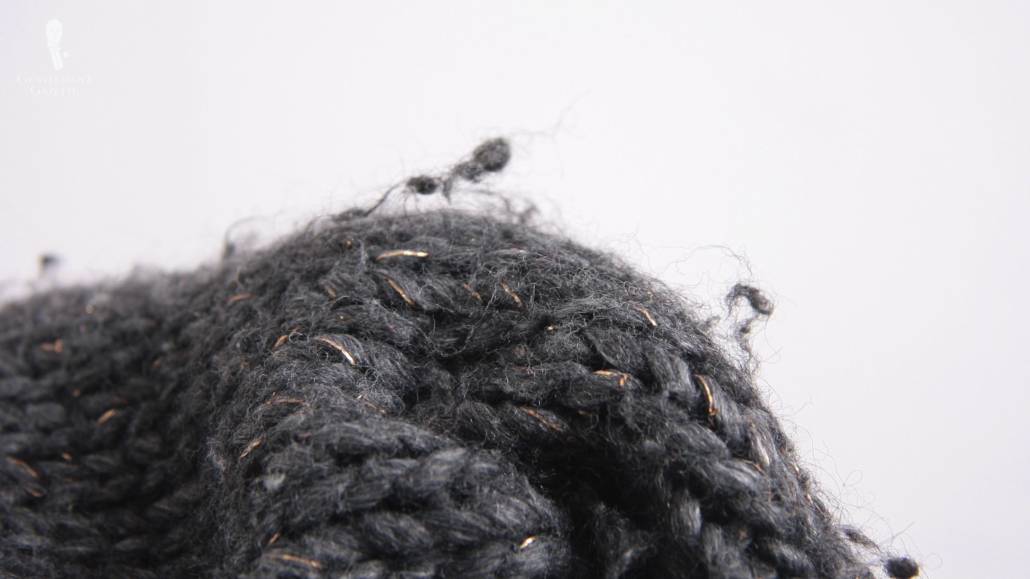It's a winter tale as old as time: you pull your favorite knits from the closet on a cold day, wrap yourself in glorious cashmere, alpaca or wool, and prepare to take on the world when something catches your eye (or fingernail) and you look down in horror – your precious Paychi Guh is besieged by unsightly interlopers. It's pills, baby, and they're here to crush your dreams. There's got to be a better way!
As both purveyors and enthusiasts of fine knit goods, we've been there, and we're here to tell you all is far from lost. First and foremost, let's take a deep breath and remind ourselves that fabric pilling is not a sign of quality - most knits pill regardless of price or label - and with a very minimal amount of work, you can have them looking good as new. Ultimately, a small amount of maintenance is part of the investment you make when buying high-end knits; if you take care of your sweaters, they will take care of you for years to come. It's better for you, for your clothing, and for the planet! Let's get into it.
Why me?
The short answer is that a fabric's propensity for pilling is determined by the length and blend of fibers used to create it, and the tightness of the weave. The materials that make up your favorite sweaters and coats, like wool, cotton, cashmere and alpaca (as well as synthetics like polyester and other blends) are naturally comprised of short, looser fibers, while silk, linen and denim are made of longer fibers and tighter weaves. Over time and with use, shorter fibers break - especially where they receive the most friction (think underarms, sleeve cuffs, waistbands, across the front where a seatbelt or purse strap lays, the thigh and seat area on leggings and swimsuits, etc.) - and become tangled with other fibers, clumping together and forming pills.
Some level of pilling is inevitable with knits unless you avoid wearing them, which we certainly don't recommend, but you can minimize their formation by following washing instructions, laundering machine washables inside out in colder water (skip the dryer!), and being cognizant of friction when you're wearing your items – your KikaNY backpack looks very cool over your Lauren Manoogian coat, but there's a small price to pay. It can also help to look at the fabric content when buying, as multi-material blends tend to pill faster than single-material knits, due to the mix of fiber lengths.
< Behold: the Windmere Clothes Shaver (and because you are no doubt wondering - yes, it is a family heirloom).
Behold: the Windmere Clothes Shaver (and because you are no doubt wondering - yes, it is a family heirloom).
What now?
This time of year several of us gleefully disappear into a hibernation chasm and spend hours using our respective devices to de-pill all our sweaters at once. It's incredibly soothing, and it's a great annual practice to get your sweaters ready for their own hibernation after they worked hard all winter for you. The good news is that pills are, for the most part, very easy to remove with no impact to the integrity of your knits. All you have to do is choose your method...
Electric/battery-powered shavers:
the most fun you can have for $13.99. They're not the most beautiful appliance, but the Pavlovian satisfaction you'll feel in response to the little sound they make when they find a pill and destroy it more than makes up for their utilitarian looks. There are electric versions, but I prefer the geographical freedom afforded by a battery-powered one, which lets me shave my sweaters the way God intended: crouched in the shadows, muttering possessively, like Gollum and his precious.
Sweater comb/stone:
For the ascetics among us, these silent, analog dreamboats use fine teeth or natural pumice to pick up and remove pills without damaging the remaining fibers. If this route is more your vibe, there are different types for different fabrics, so choose one that applies to your closet most!
Razor:
Using either a razor blade or a basic, handled shaving razor (make sure it doesn't have a moisturizing strip!) pull your garment taut and gently go over the surface of your sweater to remove pills. This method can remove more fibers than is necessary and thin the surface of your sweater, so it's not our favorite, but it will work in a pinch!
Picking them off one by one:
Don't do this.
Outsource:
Some dry cleaners will remove pilling for an additional charge, which may be a good option if you're having your items professionally cleaned anyway and don't get the same rush from a good de-pilling session that we do. Or, for the right incentive, I will consider doing it for you. There's not one pill left in my closet, and the Windmere has a fresh C battery...



Leave a comment